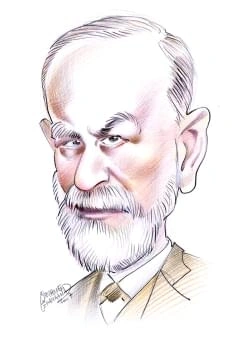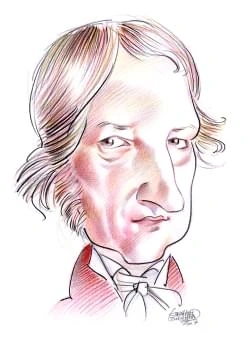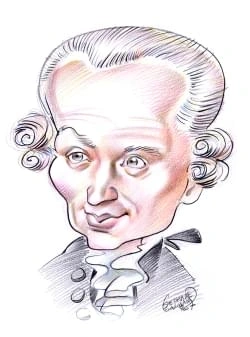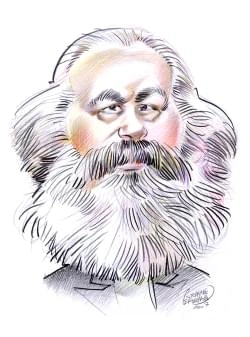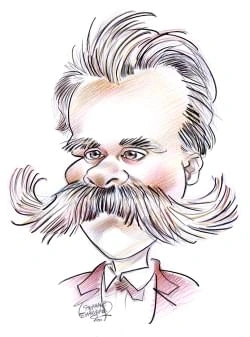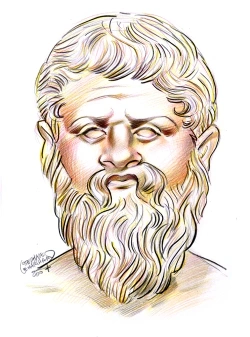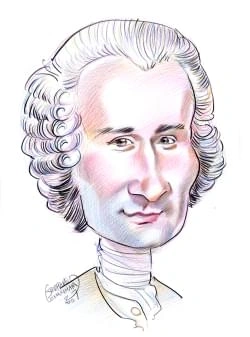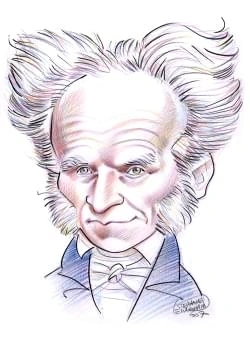992 résultats pour "2002"
-
Entwicklungshilfe - Politik.
Auf der UN-Konferenz über Entwicklungsfinanzierung 2002 in Monterrey (Mexiko) diskutierten Vertreter aus Entwicklungs- und Industrieländern die Finanzierung derMillenniumsziele: Zur Erschließung zusätzlicher Finanzierungsquellen in der Entwicklungszusammenarbeit sollen mehr Haushaltsmittel in den Entwicklungsländernmobilisiert werden. Ausländische Direktinvestitionen sollen die Wirtschaft in den Entwicklungsländern stärken. Der internationale Handel soll als ein Motor für Entwicklunggefördert we...
-
Montréal
1
PRÉSENTATION
Montréal, ville du sud-est du Canada située sur le fleuve Saint-Laurent, dans le sud de la province du Québec, à environ 50 km de la frontière avec la Nouvelle-Angleterre
aux États-Unis.
Mercier/Hochelaga-Maisonneuve, Anjou et Rivière-des-Prairies/Pointe-aux-Trembles/Montréal-Est. Selon ce découpage géographique artificiel de l’île de Montréal, Ville-Marie et le plateau Mont-Royal occupent également ce secteur Est-de-l’Île. 4 ARTS ET CULTURE 4.1 Musées et institutions culturelles Parmi les principaux musées de la ville de Montréal figurent le musée des Beaux-Arts (le plus ancien musée canadien, fondé en 1860 sous le nom anglais d’Art Associationof Montreal), le musée d'Art con...
- Irlande
-
Oman - geographie.
Die Industrie, in der 11 Prozent der Erwerbstätigen beschäftigt sind, spielt in Oman nur eine untergeordnete Rolle. Der begrenzte Binnenmarkt setzt dem produzierendenGewerbe enge Grenzen. Zu den wichtigsten Industriezweigen zählen Erdölverarbeitung und Herstellung von Baustoffen (vor allem Zement). Von lokaler Bedeutung ist dastraditionelle Handwerk. Die Energieerzeugung erfolgt zu 100 Prozent in Wärmekraftwerken. 6.4 Währung und Außenhandel Die Währungseinheit in Oman ist der Rial Omani zu 1 0...
- Insanity planning
-
Espagne.
1,5 million en 2006, Marocains, Roumains). L’Espagne est divisée en 50 provinces. Celles-ci sont réunies en 17 communautés autonomes : Andalousie, Aragon, Asturies, Baléares, Pays Basque, Canaries, Cantabrie,Castille-La Manche, Castille et León, Catalogne, Estrémadure, Galice, La Rioja, Madrid, Murcie, Navarre et Valence. Trois d’entre elles bénéficient d’un statut de « grandeautonomie » : la Catalogne, la Galice et le Pays Basque. Les quatre régions les plus peuplées, en 2007, étaient l’Andalou...
- Mali
-
München - geographie.
19. Jahrhunderts. Die Pinakothek der Moderne (2002 eröffnet) umfasst die Staatsgalerie Moderner Kunst, das Architekturmuseum der Technischen Universität München, dasStaatliche Museum für angewandte Kunst (Neue Sammlung) und die Staatliche Graphische Sammlung. Weitere Kultureinrichtungen von hohem Rang sind u. a. das Nationaltheater, Sitz der Bayerischen Staatsoper, das Kulturzentrum Gasteig, das Haus der Kunst, dasLenbachhaus, das Staatliche Museum für Völkerkunde, die Prähistorische Staatssamml...
-
-
Bundesrepublik Deutschland - geographie.
Durch die Zerstörung natürlicher Lebensräume wurde auch die Fauna stark beeinträchtigt. Die großen Raubtiere Braunbär und Wolf wurden bereits vor Jahrhundertenausgerottet, in neuerer Zeit sind Wölfe allerdings in geringer Zahl wieder nach Ostdeutschland eingewandert. Versuche, Luchse und Biber wieder einzubürgern, warengebietsweise erfolgreich. Die landbewohnende Säugetierfauna besteht zudem aus den für Mitteleuropa charakteristischen Arten von Paarhufern (Reh, Rothirsch,Wildschwein), Raubtieren...
-
Bundesrepublik Deutschland - Geschichte.
Durch die Zerstörung natürlicher Lebensräume wurde auch die Fauna stark beeinträchtigt. Die großen Raubtiere Braunbär und Wolf wurden bereits vor Jahrhundertenausgerottet, in neuerer Zeit sind Wölfe allerdings in geringer Zahl wieder nach Ostdeutschland eingewandert. Versuche, Luchse und Biber wieder einzubürgern, warengebietsweise erfolgreich. Die landbewohnende Säugetierfauna besteht zudem aus den für Mitteleuropa charakteristischen Arten von Paarhufern (Reh, Rothirsch,Wildschwein), Raubtieren...
-
Eritrea - geographie.
Eritrea gliedert sich in sechs Regionen (Zoba), die über eigene Provinzverwaltungen verfügen: Anseba, Debub, Debubawi Keyih Bahri, Gash Barka, Maakel und Semenawi Keyih Bahri. 5 WIRTSCHAFT Traditionell hat die Landwirtschaft große Bedeutung; wichtigste Anbauprodukte sind Tabak, Getreide, Kaffee und Baumwolle. Allerdings ist Ackerbau bzw. der ganzjährigeAnbau von Nutzpflanzen lediglich auf 5,6 Prozent (2003) der Landesfläche möglich. Während der Herrschaft der Italiener und Briten im 19. und f...
- Indonésie
-
Le Droit de la famille
A) L e d ro i t n a t io n a l de l a f a m i l le Selon u ne v is ion t r ad i t ion nel le, son t réu n ies des personnes l iées pa r le sang ou des al l ia nces . E nsemble de personnes l iées en t re el les pa r u n ancêt re commun , u n ensemble const i t ué de pa ren ts et des enfan ts . L a not ion de coup le : fa i t fa m i l le, à t r ave rs le ma r i age concub i nage ou le pacs ( l i v re 1 d u code civ i l ). V ie fa m i l i a le : englobe à la fois l...
-
Salt Lake City - geography.
adding a runway to the city’s airport. V GOVERNMENT Salt Lake City is governed by a mayor and a seven-member council, which is presided over by a chair. Voters elect each of these officials to four-year terms. Salt LakeCounty is governed by a county mayor elected to a four-year term and a nine-member county council. Council members—six elected from districts and three elected at-large—serve terms ranging from two to six years. The Utah Transit Authority, located in Salt Lake City, oversees publ...
-
Malawi - geographie.
Früchte, Gemüse und Erdnüsse sowie Getreide; exportiert werden vor allem Tabak, Tee, Zucker und Baumwolle. Fischfang und Fischverarbeitung dienen vorwiegend derEigenversorgung, entwickeln sich aber zu einem potentiellen Exportzweig. Die Fischindustrie hat ihren Hauptstandort in Nkhotakota am Westufer des Malawisees. Diejährliche Fangmenge liegt bei 59 595 Tonnen (2005). 6.2 Außenhandel und Währung Aufgrund seiner geographischen Lage ist Malawi beim Im- und Export auf Transportwege durch seine N...
-
Zambia - country.
The Livingstone Museum, at Livingstone, has a collection relating to the archaeology and natural history of southern Africa. The Institute for African Studies of theUniversity of Zambia publishes studies relating to central Africa. IV ECONOMY The wealth of Zambia is based largely on mining in the rich copper belt, and downturns in copper prices have severely damaging economic consequences. Someprocessing and manufacturing has been started since independence, and during the 1970s attempts were...
-
-
Lesotho - country.
V GOVERNMENT Under the terms of the constitution of 1965, which was suspended in 1970, Lesotho was a constitutional monarchy with a bicameral legislature. After a coup in 1986,legislative and executive powers were vested in the king but actually exercised by a 6-member military council and a 20-member council of ministers. In 1993 Lesothoadopted a new constitution that redefined the role of the monarchy and altered the legislative branch of the government. The king, who is head of state, has no...
-
Rom - geographie.
eingerichtet und bildet heute neben den Vatikanischen Museen eine der bedeutendsten Kollektionen der Stadt. Das Nationalmuseum Villa Giulia mit einer herausragendenSammlung etruskischer und römischer Kunst ist in dem Mitte des 16. Jahrhunderts erbauten Landhaus von Papst Julius III. untergebracht. Die Galleria Borghese mit Malereiund Plastik befindet sich in einem Palast aus dem frühen 17. Jahrhundert und geht auf die Kunstsammlung der gleichnamigen Familie zurück. Im Museo Nazionale Romanodelle...
-
Sambia - geographie.
Alphabetisierungsgrad beträgt 82,2 Prozent. An der Universität von Sambia in Lusaka (gegründet 1965) studieren etwa 4 600 Studenten. Das Livingstone Museum in Maramba enthält eine Sammlung von Ausstellungsstücken zur Archäologie und Naturgeschichte Südafrikas. Das Institut für AfrikanischeStudien, das der Universität von Sambia angegliedert ist, veröffentlicht Studien über Zentralafrika. 5 VERWALTUNG UND POLITIK Sambia ist seit 1964 eine Präsidialrepublik. Gültig ist die Verfassung von 1991. 5....
-
The Gambia - country.
The population of The Gambia (2008 estimate) is 1,735,464, making it one of the least populous countries of Africa. Still, the country has a fairly high overall populationdensity of 174 persons per sq km (449 per sq mi), and the population is increasing at a rate of 2.7 percent a year. Banjul, formerly called Bathurst, is the capital andonly seaport. The largest city is Serrekunda, a transportation hub and commercial center. B Religion and Language The great majority of the people of The Gambia...
-
Jamaica - country.
majority, the Church of God, Baptists, Anglicans, Seventh-day Adventists, Pentecostalists, and Roman Catholics predominate. Several well-established Jewish, Muslim,and Hindu communities exist. A number of popular sects, such as Pocomania and Rastafarianism, are a significant and famous feature of the national religious life. C Education School attendance by children between the ages of 6 and 11 is nearly universal, and 84 percent of all 12- to 18-year-olds attend secondary institutions. In 2000...
-
Hardware (computer).
Magnetic tape drives use magnetic tape similar to the tape used in VCR cassettes. Tape drives have a very slow read/write time, but have a very high capacity; in fact,their capacity is second only to hard disk drives. Tape drives are mainly used to back up data. Compact disc drives store information on pits burned into the surface of a disc of reflective material ( see CD-ROM). CD-ROMs can store up to 737 megabytes (MB) of data. A Compact Disc-Recordable (CD-R) or Compact Disc-ReWritable (CD-RW)...
- UNIVERSITE MONTESQUIEU - BORDEAUX IV ECOLE DOCTORALE DE DROIT (E.
-
Usbekistan - geographie.
3.4 Bildung und Kultur Der Alphabetisierungsgrad der Bevölkerung ist mit 99,2 Prozent der Erwachsenen (2000) sehr hoch. 4 WIRTSCHAFT Zu Beginn der Unabhängigkeit Usbekistans 1991 wurden Reformen zur marktwirtschaftlichen Entwicklung und zur Liberalisierung der Wirtschaft eingeleitet. DieBodenreform kam jedoch nur schleppend voran. Obwohl es in Usbekistan mehrere große Industrieunternehmen gibt, dominiert die Agrarwirtschaft. Der Anteil derLandwirtschaft am Bruttoinlandsprodukt (BIP) liegt noch...
-
- sciences politiques l1
-
Ehemalige Jugoslawische Republik Mazedonien - geographie.
Der Schulbesuch in Mazedonien ist kostenfrei; es besteht eine allgemeine Schulpflicht von 8 Jahren (2001–2002). Aufgrund der systematischen Förderung desBildungswesens liegt der Alphabetisierungsgrad der Bevölkerung inzwischen bei 89 Prozent, ist aber im europäischen Vergleich immer noch relativ niedrig. Annähernd70 Prozent der Mazedonier absolvieren weiterführende Schulen. Es gibt zwei Universitäten, die sich in der Hauptstadt Skopje (gegründet 1949) und in Bitola (gegründet1979) befinden. Alba...
-
Moçambique - geographie.
bestehende Volksversammlung. Mit der im November 1990 in Kraft getretenen neuen Verfassung wurde ein Mehrparteiensystem eingeführt. 1992 wurde Moçambiques ersteOppositionspartei, die Nationale Widerstandsbewegung Moçambiques (Renamo), zugelassen. Staatsoberhaupt ist der Präsident, der für eine Amtszeit von fünf Jahren direkt gewählt wird. Die 250 Abgeordneten des Parlaments (Assembleia da República) werden für vier Jahre gewählt. Der Staat gliedert sich verwaltungsmäßig in zehn Provinzen und d...
-
Libanon - geographie.
4.1 Bildung und Schulwesen Die Analphabetenquote lag 1998 für Männer bei 9 Prozent, für Frauen bei 21 Prozent. Über 70 000 Studenten studieren an 20 Universitäten und Hochschulen, mehr als dieHälfte davon an der staatlichen Université Libanaise. Die anderen Universitäten sind in privater Hand. Die verbreitetsten Fremdsprachen sind Französisch und Englisch. 4.2 Kultureinrichtungen In Beirut bietet ein Goethe-Institut Veranstaltungen an. Mehrere Kulturdenkmäler im Libanon wurden in die Liste des...
-
Tanzania - country.
The population of Tanzania (2008 estimate) is 40,213,162, giving the country an overall population density of 45 persons per sq km (118 per sq mi). Yet the populationdistribution is irregular, with high densities found near fertile soils around Kilimanjaro and the shores of Lake Malawi, and comparatively low density throughout much ofthe interior of the country. In the late 1960s and 1970s the Tanzanian government resettled most of the rural population in collective farming villages as part of i...
-
Peru - geographie.
(390 000), Pucallpa (312 000), Trujillo (277 000), Chiclayo (251 000) und Piura (248 000). 3.2 Sprache und Religion Spanisch, das von etwa 70 Prozent der Bevölkerung gesprochen wird, war bis 1975 die einzige Amtssprache Perus. Dann wurde Quechua, eine der bedeutendsten unter denIndianersprachen – rund 25 Prozent der Bevölkerung sprechen es –, ebenfalls zur offiziellen Amtssprache erhoben. Auch Englisch und Aymara, eine weitere Indianersprache,sind im Land verbreitet. Ungefähr 90 Prozent der Per...
-
Costa Rica - country.
protection from future deforestation is not guaranteed. Deforestation places Costa Rica’s rich biodiversity in danger. The country’s location on the cusp between Northand South America and its abundance of tropical forests make it home to a great variety of species, many of them rare and threatened. Deforestation also contributesto the country’s problematic rate of soil erosion. Costa Rica is party to international treaties concerning biodiversity, climate change ( see Global Warming), endangere...
-
Trinidad and Tobago - country.
III PEOPLE The history of Trinidad and Tobago is reflected in the makeup of its population, among the most ethnically diverse in the Caribbean. Blacks of African ancestry andAsians of Indian ancestry each make up about 40 percent of the population. The remainder is mainly of mixed ancestry, although there are also small groups of peopleof Chinese, European, South American, and Middle Eastern descent. The ethnic diversity of Trinidad and Tobago owes its origins to slavery and its abolition. Afr...
-
- 861 SUJETS-TEXTES DE L’ÉPREUVE DE PHILOSOPHIE AU BACCALAURÉAT
-
Syria - country.
D Education Primary education is free and compulsory for all children aged 6 through 12. Some 78 percent of the adult Syrian population was estimated to be literate in 2005.Primary schools enrolled 2.8 million pupils in the 2000 school year, and 1.1 million students attended secondary schools and vocational institutes. In 1998, 94,110 Syrian students were enrolled in institutes of higher education. Syria has universities in Damascus, Ḩalab, Ḩim ş, and Al L ādhiq īyah. Also in Damascus isthe Ar...
-
Äthiopien - geographie.
Etwa 52 Prozent der Gesamtbevölkerung gehören dem christlichen Glauben an. In den nördlichen Provinzen ist das Christentum die vorherrschende Religion. Die äthiopischeKirche ist eine der ältesten und größten Ostkirchen. Sie wird von einem Patriarchen geleitet und steht in enger Verbindung zur koptischen Kirche in Ägypten. Bis zum Sturzdes Kaisers Haile Selassie 1974 war sie die Staatskirche von Äthiopien. In den südlichen Regionen dominiert der Islam; insgesamt gehören etwa 31 Prozent der Bevölk...
-
Nova Scotia - Geography.
summer. Nova Scotia receives an average of more than 1,140 mm (45 in) of rain annually, with the Atlantic shore receiving 1,400 mm (55 in) or more. Most of the provincereceives about 1,900 mm (about 70 in) of snow, and considerable winter precipitation comes in the form of rain or ice storms. The average temperature in January, thecoldest month, is generally about -4°C (about 25°F) near the coast and somewhat colder toward the interior. The average temperature in July, the hottest month, isabout...
-
Nova Scotia - Canadian History.
summer. Nova Scotia receives an average of more than 1,140 mm (45 in) of rain annually, with the Atlantic shore receiving 1,400 mm (55 in) or more. Most of the provincereceives about 1,900 mm (about 70 in) of snow, and considerable winter precipitation comes in the form of rain or ice storms. The average temperature in January, thecoldest month, is generally about -4°C (about 25°F) near the coast and somewhat colder toward the interior. The average temperature in July, the hottest month, isabout...
- Droit administratif
-
Polen - geographie.
Etwa 98 Prozent der Bevölkerung sind Polen. Die größten ethnischen Minderheiten sind Ukrainer und Weißrussen, zu den kleineren Gruppen gehören u. a. Slowaken,Tschechen, Litauer, Deutsche, Roma und Juden. Die Verstädterung hat seit dem Ende des 2. Weltkrieges zugenommen; mittlerweile leben 62 Prozent der Bevölkerung in Städten (2005). Obwohl die Bevölkerungvergleichsweise jung ist, nimmt das Durchschnittsalter ständig zu. Seit dem Ende der massiven Bevölkerungsverschiebungen in den ersten Jahren...
-
Italien - geographie.
Das Klima auf der Halbinsel unterliegt hohen regionalen Schwankungen, die hauptsächlich durch die Apenninen verursacht und von den Winden der umliegenden Meerebeeinflusst werden. Die klimatischen Bedingungen zeigen hier eine deutliche Abhängigkeit von der Entfernung zum Meer und der Höhenlage. In den Ebenen und in dentieferen Lagen der Apenninen sind die Winter mild, die Sommer sehr warm. Extrem hohe Temperaturen während der warmen Jahreszeit werden durch die kühlenden Brisenvom Mittelmeer gemil...
-
-
Guatemala - country.
C Climate The climate of Guatemala varies according to elevation, from hot coastal plains to cold mountain heights. Most of the population lives between 900 and 2,400 m (3,000and 8,000 ft) above sea level, where there are warm days and cool nights with average annual temperatures of 20°C (68°F). The coastal regions are hot and humid,with average annual temperatures of 28°C (83°F). A rainy season, from May through October, is sometimes called “winter” because it brings cloudy afternoons andlower...
-
France - country.
In both the Paris and Aquitaine basins, fertile soils derived from limestone and wind-deposited dust, called loess, have supported prosperous agriculture since ancienttimes. Other lowlands in France are scattered and relatively small. They include the Alsace Plain in the east, bordering Germany, the valley of the Rhône River in thesoutheast, and the Languedoc Plain along the Mediterranean coast. A2 Uplands France contains several regions of uplands, the worn down remains of ancient mountain sys...
}})
